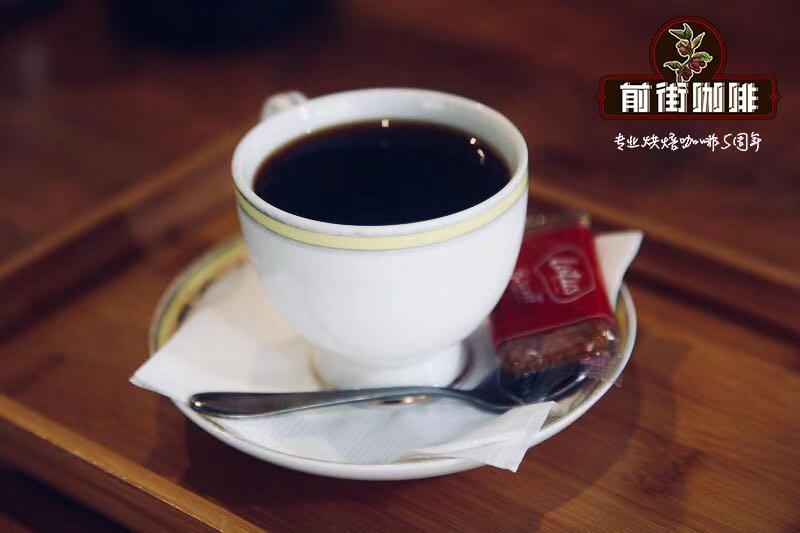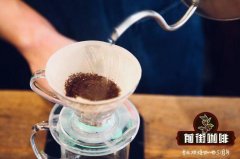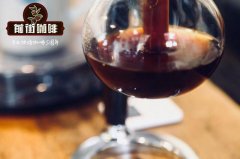What is the treatment of El Salvador bourbon coffee? introduction to the taste of Salvadoran coffee beans

Professional coffee knowledge exchange more coffee bean information please follow the coffee workshop (Wechat official account cafe_style)
Introduction to Front Street Coffee-Salvadoran Coffee
Flavor: balanced taste and good texture
Recommended baking method: moderate to deep, with a variety of uses
Top quality beans: El Salvador SHB
Taste characteristics: sour, bitter, sweet mild and moderate.
Salvadoran coffee ranks side by side with Mexico and Guatemala as the producers of Asa and Merdo, and is fighting for the top one or two places in China and the United States with other countries. The highlands of origin are large coffee beans of all sizes, which are fragrant and mild in taste. Like Guatemala and Costa Rica, coffee in El Salvador is graded according to altitude. The higher the altitude, the better the coffee. It is divided into three grades according to elevation: SHB (strictly high grown) = highlands, HEC (high grown central) = mid-highlands, and CS (central standard) = lowlands. The best brand is Pipil, which is what the Aztec-Mayan (Aztec-Mayan) called coffee, which has been recognized by the American Organic Certification Society (Organic Certified lnstitute of America).
Introduction to Qianjie Coffee-El Salvador Red bourbon treatment
On the whole, Salvadoran coffee inherits the mild quality of Sino-American coffee, which is soft, slightly sour and has beautiful sweetness. At the same time, it also has its own characteristics: the aromatic taste is slightly sour and very soft; it is pure and has no miscellaneous flavor, and the taste balance is excellent; the smooth feeling like cream chocolate is impressive; the dense feeling of coffee in the mouth gives the coffee a deep taste and a long finish.
Brazilian half-sun
Coffee fields are endless, and most of them are harvested by machinery, which is in line with economic benefits. When 75% of the coffee fruit in the coffee garden turns red, mechanical harvesting is started, followed by the same pre-washing operation, which is moved into the sink to remove floating beans, sift out the sunken beans, and then use a large pulp screening machine to dig out the pulp and remove the pods covered with pectin. The next stage is separate from the washing method: the sticky pods do not need to be moved into the tank to ferment, but to the outdoor bean drying farm. Because of the dry climate in Brazil, the sticky pectin on the pods will harden in about a day or so. Then use a large number of manpower to turn up and down, so that the pods dry evenly inside and outside, so as not to return to moisture and stink. For about two to three days, with the help of the natural forces of sunlight and dry climate, the pods can achieve a certain degree of dehydration. Then further dry with a dryer, the water content is reduced to 10.5%, and the pods are stored in a special container for about 10 days to further mature, in order to stabilize the quality, remove sheep skins (pods) before export, remove coffee beans, and pack them in stages.
This yellow bourbon is made in Shangri-La Manor. El Bourbon is usually caramel with a fruity acidity. After being treated with red honey, the sour taste becomes low and elegant, and the flavor increases. (red honey treatment: remove about 25% of the pectin; dry longer than yellow honey, and reduce the time of direct sunlight exposure, even in the shading shed, lasting about 12 days. )
Flavor:
Dry aroma: baked almonds, rum, cream chocolate
Wet fragrance: raisins, honey, cream chocolate
Palate: elegant acidity, high sweetness and juicy taste; after a little cooling, there will be a sense of fruit tea, hanging cup with honey, cream chocolate aroma
END
Important Notice :
前街咖啡 FrontStreet Coffee has moved to new addredd:
FrontStreet Coffee Address: 315,Donghua East Road,GuangZhou
Tel:020 38364473
- Prev

What are the characteristics of Salvadoran coffee? introduction to the flavor of Salvadoran black honey coffee
Professional coffee knowledge exchange more coffee bean information please follow the coffee workshop (Wechat official account cafe_style) front street coffee introduction-Salvadoran coffee the history of Salvadoran coffee El Salvador is called the country of volcanoes, is the smallest country in Central America. Since the mid-17th century, coffee grown here has been mainly used for domestic consumption. But for the next 100 years, coffee by coffee
- Next

How about Guatemalan coffee beans? how to drink Guatemalan coffee is the right way.
Professional coffee knowledge exchange more coffee bean information please follow the coffee workshop (Wechat official account cafe_style) front street coffee introduction-Guatemala Coffee Guatemala is a volcanic country, the best cities, but also similar to the third-and fourth-tier cities in mainland China. The capital was originally located in the ancient city of Antigua, but was forced to relocate to Guatemala City due to volcanic eruptions. The famous Vivette Nango
Related
- Beginners will see the "Coffee pull flower" guide!
- What is the difference between ice blog purified milk and ordinary milk coffee?
- Why is the Philippines the largest producer of crops in Liberia?
- For coffee extraction, should the fine powder be retained?
- How does extracted espresso fill pressed powder? How much strength does it take to press the powder?
- How to make jasmine cold extract coffee? Is the jasmine + latte good?
- Will this little toy really make the coffee taste better? How does Lily Drip affect coffee extraction?
- Will the action of slapping the filter cup also affect coffee extraction?
- What's the difference between powder-to-water ratio and powder-to-liquid ratio?
- What is the Ethiopian local species? What does it have to do with Heirloom native species?

